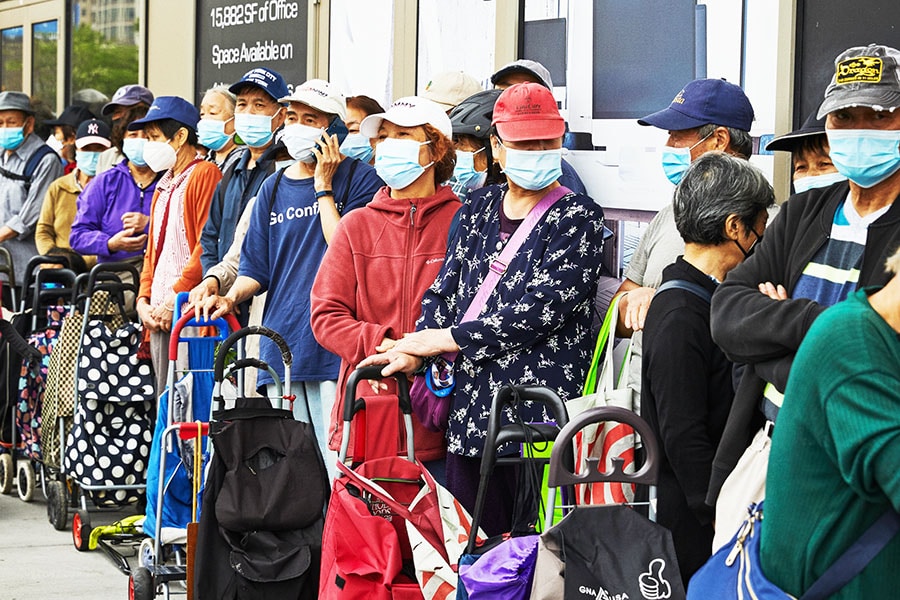
In an unequal economy, the poor face inflation now and job loss later
In that case, poorer families will almost certainly bear the brunt again, because low-wage workers are often the first to lose hours and jobs
 Volunteers organize food donations at a food pantry run by West Houston Assistance Ministries in Houston, Aug. 5, 2022. Many higher income households have been able to keep spending even as costs climb, but data and anecdotes suggest that lower-income households, despite the resilient job market, are struggling more profoundly with inflation. (Meridith Kohut/The New York Times)
Volunteers organize food donations at a food pantry run by West Houston Assistance Ministries in Houston, Aug. 5, 2022. Many higher income households have been able to keep spending even as costs climb, but data and anecdotes suggest that lower-income households, despite the resilient job market, are struggling more profoundly with inflation. (Meridith Kohut/The New York Times)
For Theresa Clarke, a retiree in New Canaan, Connecticut, the rising cost of living means not buying Goldfish crackers for her disabled daughter because a carton costs $11.99 at her local Stop & Shop. It means showering at the YMCA to save on her hot water bill. And it means watching her bank account dwindle to $50 because, as someone on a fixed income who never made much money to start with, there aren’t many other places she can trim her spending as prices rise.
“There is nothing to cut back on,” she said.
Jordan Trevino, 28, who recently took a better-paying job in advertising in Los Angeles with a $100,000 salary, is economizing in little ways — ordering a cheaper entree when out to dinner, for example. But he is still planning a wedding next year and a honeymoon in Italy.
And David Schoenfeld, who made about $250,000 in retirement income and consulting fees in 2021 and has about $5 million in savings, hasn’t pared back his spending. He just returned from a vacation in Greece, with his daughter and two grandchildren.
“People in our group are not seeing this as a period of sacrifice,” said Schoenfeld, who lives in Sharon, Massachusetts, and is a member of a group called Responsible Wealth, a network of rich people focused on inequality that pushes for higher taxes, among other stances. “We notice it’s expensive, but it’s kind of like: I don’t really care.”
©2019 New York Times News Service









